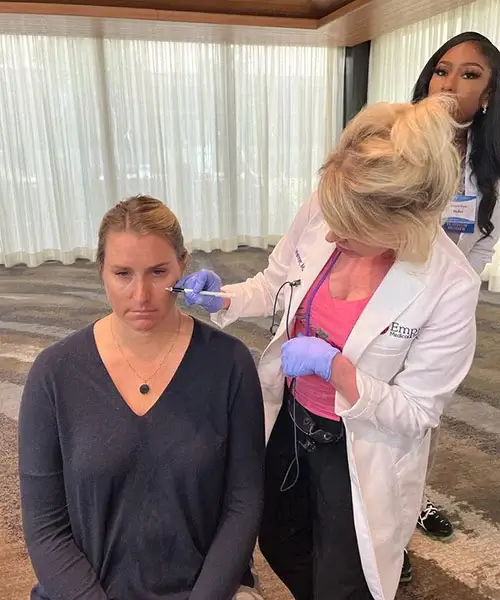Getting Started with Microdermabrasion: Training and Certification Requirements
By Dr. Stephen Cosentino
PRESIDENT OF EMPIRE MEDICAL TRAINING
Microdermabrasion is one of the most exciting noninvasive cosmetic treatments available today. It’s no wonder it’s fast gaining popularity with patients — and with providers.
If you’re a current or aspiring aesthetician or cosmetic medicine specialist interested in adding microdermabrasion to your practice, you need to know what’s required to get certified and what to expect from a microdermabrasion training course.
Read on for the details.
Microdermabrasion Certification Requirements
Microdermabrasion isn’t as heavily regulated as some other areas of cosmetic practice, such as neuromodulator and dermal filler injections.
However, it’s a good idea to check with your state department of health or board of cosmetic practice to find out what if any certifications or licensure they require. Most states require microdermabrasion practitioners to have active aesthetician or cosmetician licenses.
Even if the answer is “none,” many patients hesitate to work with providers who can’t prove they’ve completed an accredited microdermabrasion course — or, better yet, a complete facial aesthetic training course. You may be asked to provide a certificate of completion.
Microdermabrasion Training: What to Expect
What can you expect from a comprehensive microdermabrasion training course? Whether you’re enrolling in an online course or a hybrid online/in-person program, expect to cover the following.
Basic Facial Anatomy
The course should begin with a basic overview of facial anatomy concepts relevant to microdermabrasion treatment. This overview won’t be as extensive as that given to injectables trainees (Botox and dermal fillers) but should leave practitioners comfortable working with the facial skin.
Basic Skin Chemistry
Since microdermabrasion is a skin care procedure, your microdermabrasion course should cover basic skin chemistry and properties. The instructor should cover the basic mechanism of action for microdermabrasion treatments as well.
Patient Screening & Contraindications
The course should explain how to screen patients prior to treatment, how to take patient medical histories, and which contraindications to look for during the pretreatment consultation. The instructor may also touch on microdermabrasion pricing, marketing, and other business considerations as part of this discussion.
Types of Microdermabrasion Treatment
The course should cover the different types and techniques of microdermabrasion treatment, focusing not only on dominant approaches like diamond tip microdermabrasion but on crystal microdermabrasion and others as needed. The discussion should leave you feeling comfortable enough to perform microdermabrasion in a variety of settings.
Treatment Procedure
The heart of the course is a detailed overview of microdermabrasion treatment procedures. If the course is in-person or hybrid online/in-person, the instructor may have one or more live patient volunteers present to demonstrate techniques in a real-world environment. Otherwise, expect videos and other multimedia.
Pre- and Post-Treatment Considerations
The course should cover pretreatment preparation as well as post-treatment considerations, including patient follow-up protocols and possible complications.
Other Types of Clinical Skin Care Treatments
Many microdermabrasion courses cover other types of clinical skin care treatments as well, such as laser skin resurfacing and chemical peels. Often, microdermabrasion is taught as part of a more comprehensive cosmetic facial course designed to prepare providers to provide a range of noninvasive skin care services.


